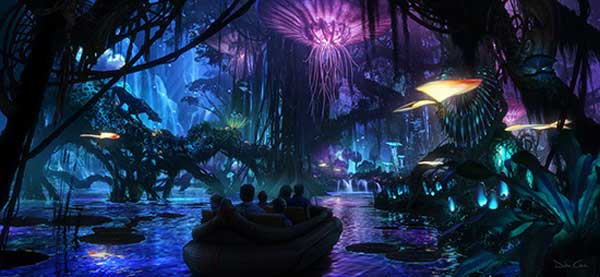
What makes a theme park attraction a classic? There is no easy formula for why some click while others don’t leave an impression. Branding can draw the crowds, but it doesn’t guarantee longevity. Thrills also make an impact, but it takes more to transcend the norm. Money helps, but plenty of big-budget attractions have failed. Why do some remain fresh? This often inexplicable magic is what keeps fans like me coming back repeatedly to experience them.
It’s these classics that come to mind when most people think about Disney theme parks. Pirates of the Caribbean opened at Disneyland in 1967, yet it remains one of the true greats. The Haunted Mansion uses techniques from the early 1800s to present the ghosts. Neither has a clear storyline, and they don’t need one. It’s better to maintain the mystery, and that lack of a cohesive narrative is part of most classic attractions. There are exceptions with some of the original EPCOT Center rides, but even they were doing something original.
When I think of what makes a classic, I’m referring to more than just past gems that drew a rabid but limited following. If You Had Wings is a personal favorite, but it would fall into that category. On the other hand, Horizons and the original Journey Into Imagination would make the cut because their impact remains strong nearly 20 years after they closed. The legacy makes the difference, and we can’t always predict what will stick with us. I loved World of Motion but didn’t realize how much it connected until years after Test Track replaced it.
Not Just Headliners
E-ticket attractions don’t always reach this status either. Space Mountain definitely fits the bill, but Rock ‘n’ Roller Coaster falls a little short. It’s a great thrill ride but doesn’t immediately spring to mind as a Disney staple. Time also changes an attraction’s status as technologies and tastes shift. The Great Movie Ride is a perfect example. It’s still a fun trip but no longer the centerpiece of the park that it was at the opening. Despite the iconic exterior, it lacks the same power of a presentation like Spaceship Earth.
I should also clarify that classic doesn’t automatically mean old. There are examples from Disney’s Hollywood Studios, California Adventure, and Animal Kingdom that deserve this status. The Twilight Zone Tower of Terror opened in 1994, but I feel like it’s been there forever. Radiator Springs Racers shares elements with many of the great attractions of the past. There has been a mild dry spell at Walt Disney World, however. Seven Dwarfs Mine Train is a cool ride, but I’m not ready to induct it so far. For my money, the last classic attraction in Florida opened back in January 2006. That prize goes to the remarkable Expedition Everest.
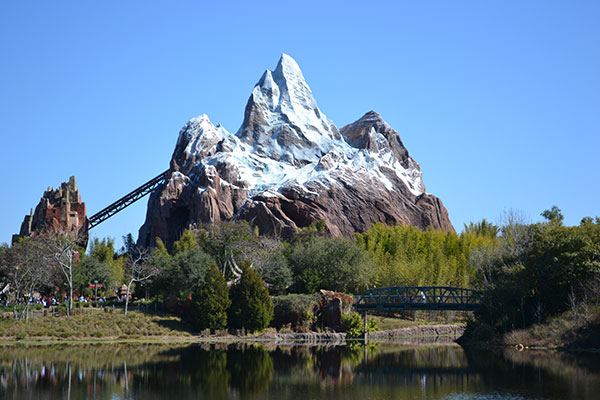
A Himalayan Escape
Expedition Everest opened with tremendous fanfare, including three different TV specials on the construction and Imagineering background work. Supervised by Joe Rohde, the design of the exterior and queue create a convincing story beyond the thrills. In particular, the “Yeti Museum” within the line goes well beyond what you might expect. It’s easy to speed through it and not even notice all the details and artifacts. The ride still works without them, but the extra touches enhance the experience. These remarkable details are the hallmark of a classic Disney attraction.
This sense of place continues as you board the ride vehicles, which resemble vintage steam trains. You don’t immediately dive into the first thrill either. It’s just a pleasant ride through the countryside with stunning views of the Animal Kingdom. What could go wrong? Once we reach a destroyed track, you know the calm journey is about to get crazy.
Despite frequent rides, I’m still a little surprised by the swift move backwards thorough a new track. The slow escalation to the big drop, a giant helix, and the ultimate confrontation with the yeti is very effective. It’s easy to miss the attractive landscape and set design while you’re gripping the bar for dear life.
An Original Concept
It’s notable that Expedition Everest has no IP, though you might consider the mountain itself a recognizable brand. In this case, Disney characters would probably distract us from the fun. Instead of wondering about the next turn and the monster lurking inside the mountain, we’d be considering how the attraction connected to the original property. All we need to know is that we’re on an adventure in Nepal and may face serious danger. It’s a deceptively simple experience that works because there aren’t complexities dropped on top of the story.
Expedition Everest is notorious for its broken yeti, which only operated in “A mode” for a short time. The ambitious animatronic was ahead of its time, which created mechanical problems. Despite the disappointment in not being the original, the “Disco Yeti” still provides a good scare. Most guests don’t realize they aren’t experiencing the most impressive version. It’s a small hiccup for one of Disney’s most inventive attractions. I’m still hopeful that after Pandora opens later this year, Disney will finally take the time to fix the yeti in some form. It doesn’t need to match the original, but there could be a happy medium between them.
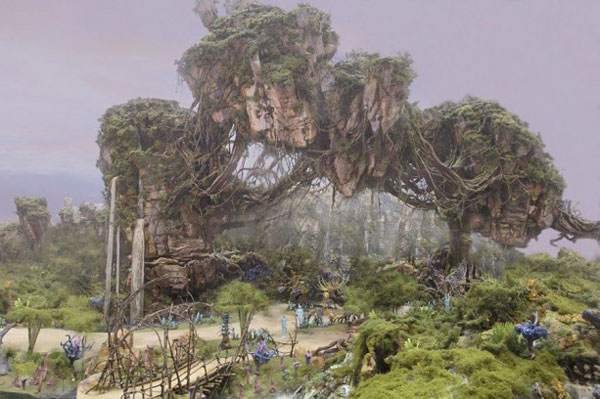
The Rise of Pandora
I’ve described Expedition Everest because it shows aspects of what makes a classic attraction. There is no single way to achieve greatness either. What’s most important with that example is the attention to detail, unpredictability, and massive scale. The size isn’t essential in every case, but it works because Mount Everest is a selling point. It looks much larger than it really is thanks to forced perspective, which is not easy. It’s a striking structure, and the view of the train exiting the mountain for the big drop adds to the excitement. It will be fascinating to see if Disney brings those same attributes to the two attractions in Pandora: The World of Avatar.
Rohde is also leading the Pandora project, so I believe that we’re in store for greatness. This has little to do with the source material, however. James Cameron’s Avatar set up the template for this land, but I don’t sense that Disney is sticking closely to that story. Instead, this Pandora jumps 100 years after the events of the movie. It’s a smart move that allows the Imagineers to expand the scope of what we’ve seen to this point. I have few doubts that atmosphere will be immersive and full of detail. This brings me to the two attractions — Flight of Passage and the Na’vi River Journey. Will they live up to my high expectations?
Let’s start with the Flight of Passage, which uses a similar technology as Soarin’ but will likely be more thrilling. Guests will board a “mountain banshee” to fly through the Pandora landscape. It sounds exciting, though riders prone to motion sickness may not enjoy it so much. Information is still limited at this point. I’m most interested in the ride vehicles, which will resemble banshees in some way. A leaked image appeared recently but didn’t offer a clear picture. I suspect that Flight of Passage will succeed, though I’m more excited for the other attraction.
I love water rides, so it takes very little to convince me about the Na’vi River Journey. When you add in growing plants in a “bioluminescent rainforest”, mysterious creatures, and an animatronic Shaman of Songs, it’s hard to go wrong. I’m expecting the latest projection technology to combine with attractive physical sets and deliver a striking experience. It’s possible that I’m too optimistic, but the small details and concept art only reinforce my high expectations. If there’s a classic ride in Pandora, I’m betting it will be the Na’vi River Journey.
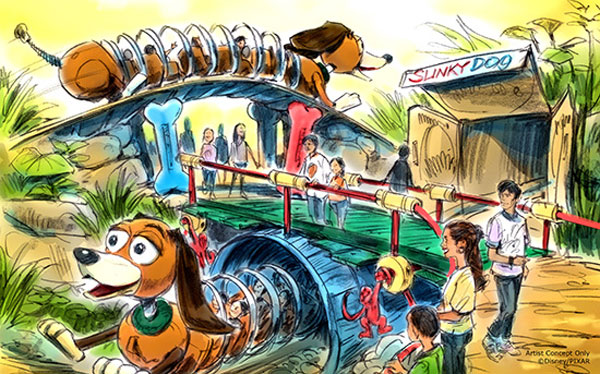
A Very Different Studios
Looking beyond Pandora, the other future candidates will appear at the Studios. Toy Story Land will come first, but I’m muting expectations on those attractions. Slinky Dog Dash might be a solid family coaster, but it doesn’t seem ambitious enough. Alien Swirling Saucers is a nice complement but essentially a spruced-up carnival ride. I’m excited to see this expansion and believe it will include great theming. I’m just not expecting the attractions to line up with Disney’s best.
On the other hand, I have no doubts that Disney will put its best foot forward with Galaxy’s Edge. There is a lot riding on whether they can nail this land, which will also appear at Disneyland. The cantina, interactive characters, and set design sound incredible, but can Imagineering succeed with the rides? Piloting the Millennium Falcon should be fun, though I wonder about its capacity. The demand for both attractions will be insane, and they might be a classic.
I’m most excited to experience the Stormtrooper Battle Escape, which appears to mix screens with physical sets. Universal has mastered this combination in Spider-man and Transformers, though reports are that Disney is going in a different direction. A Micechat article from October 2016 says there will be 150 animatronic Stormtroopers, which is crazy. It also describes situations where you’ll exit the ride vehicle and then re-board it multiple times. If Disney can pull off what’s described in that article, this should rank among the top attractions at any theme park.
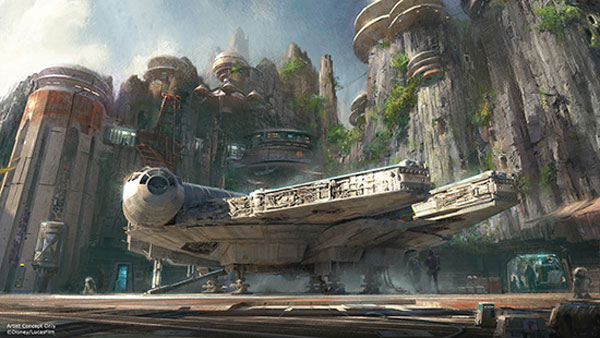
Looking Ahead
The refreshing part of the three expansions is the focus on original attractions. These aren’t just copies of rides from other parks. I visited Disney in the pre-Internet days of the ‘80s and early ‘90s, and I loved discovering the latest offerings with each new trip.
We’ve also heard rumblings about changes at EPCOT, and Stitch needs a replacement at The Magic Kingdom. I’m sometimes critical of the moves from management but have high hopes for the expansions on the horizon. Could Disney be poised for a renaissance on par with The Disney Decade? We know that Imagineering can still build quality attractions; can they add more classics to the roster?



Leave a Reply